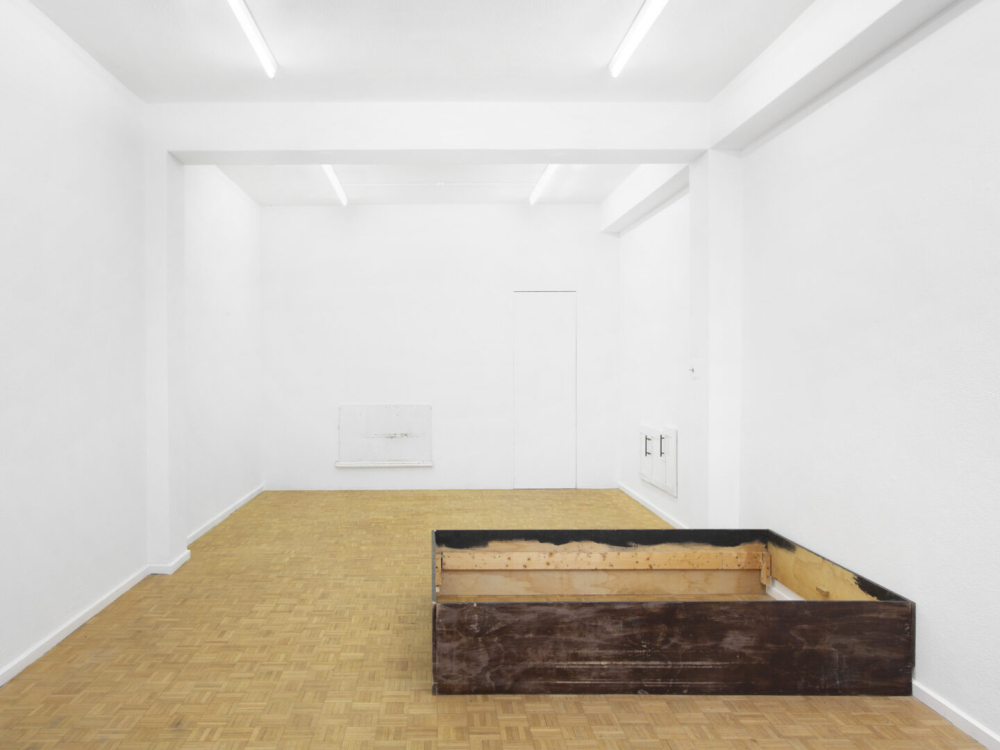Emily Barker — Wall Works
One of the shaping myths of our society is its self-promotion as a frictionless space. It posits life
as a fluid sequence of clear movements ordered by the second. Heels metronomically stamping
on the polished floor. The automatic door opening in front of you at the exact moment you
approach it. Everything is just like in a movie.
I remember an actor talking in an interview about how a door handle is grabbed in a movie as an
instance where the real alienation of fiction is concealed. The protagonist opening the door will
never miss the handle; there will be no visible hesitation in the hand, nor will their shoulder ever
bump into the doorframe as they enter the room. In these multiple rehearsed scenes, inserted
in-between two actions to create narrative continuity, the movements are simply perfect, and
the viewer unconsciously takes them for granted.
But the illusion of a seamless life only persists for those benefiting from this narrative. Those
who are deemed physically, ethnically, mentally, or financially worthy of life by our society. If
you happen to fall outside these criteria, your experience of the world will be one of a
succession of collisions.
The exhibition displays two cut-out pieces of wall, a marred bedframe, and the kitchen cabinet
doors from Barker’s former house in Los Angeles, where they lived for the past 5 years. It is a
typical and widespread type of one-story American bungalow, known as Accessory Dwelling
Unit in California. It is a type of housing built with standard cost-efficient materials: drywall on
wood frame construction.
All the pieces present a similar horizontal abrasion: the resulting damage from Barker’s daily
movements with their wheelchair, grinding, scratching, and denting the walls and furniture of
their house over the years.
This laborious engraving is the very horizon of a person using a mobility device. If every contact
does leave a trace, most of the mundane traces of the segregation and marginalization
experienced by non-ambulatory people are never documented. Barker’s wall works should be
understood as forensic samples. They perform a biopsy of our failed built environment.
At Pompeii, as in other Roman sites, the most beautiful frescoes in the center of the painted
walls of the villas were often cut out to be displayed in the shelter of a museum with the idea of
preserving the most representative traces of a past culture. But here, the operational mode is
more akin in its urgency to the work of rescue archaeology, as those pieces have been extracted
right before Barker’s pending eviction of their house and at a point where the deposit was a
long-forgotten cause (this wear and tear would most probably fall into the category of property
damage). Unlike traditional survey and excavation, rescue archaeology is undertaken at speed
on sites about to be destroyed or erased.
Switzerland, a country where nearly every built space is only for those whose legs work, is a
particularly acute example of the permanent invisibilization of whatever manifestation of
deemed divergent forms of life. Marks and traces are constantly cleaned up and erased in a
quasi-neurotic attempt to force reality to look like its convenient, idyllic fiction. The cars on the
road, in their mandatory pristine condition, with no apparent damage or bumps to be found,
maintain the illusion of a world with no accidents.
